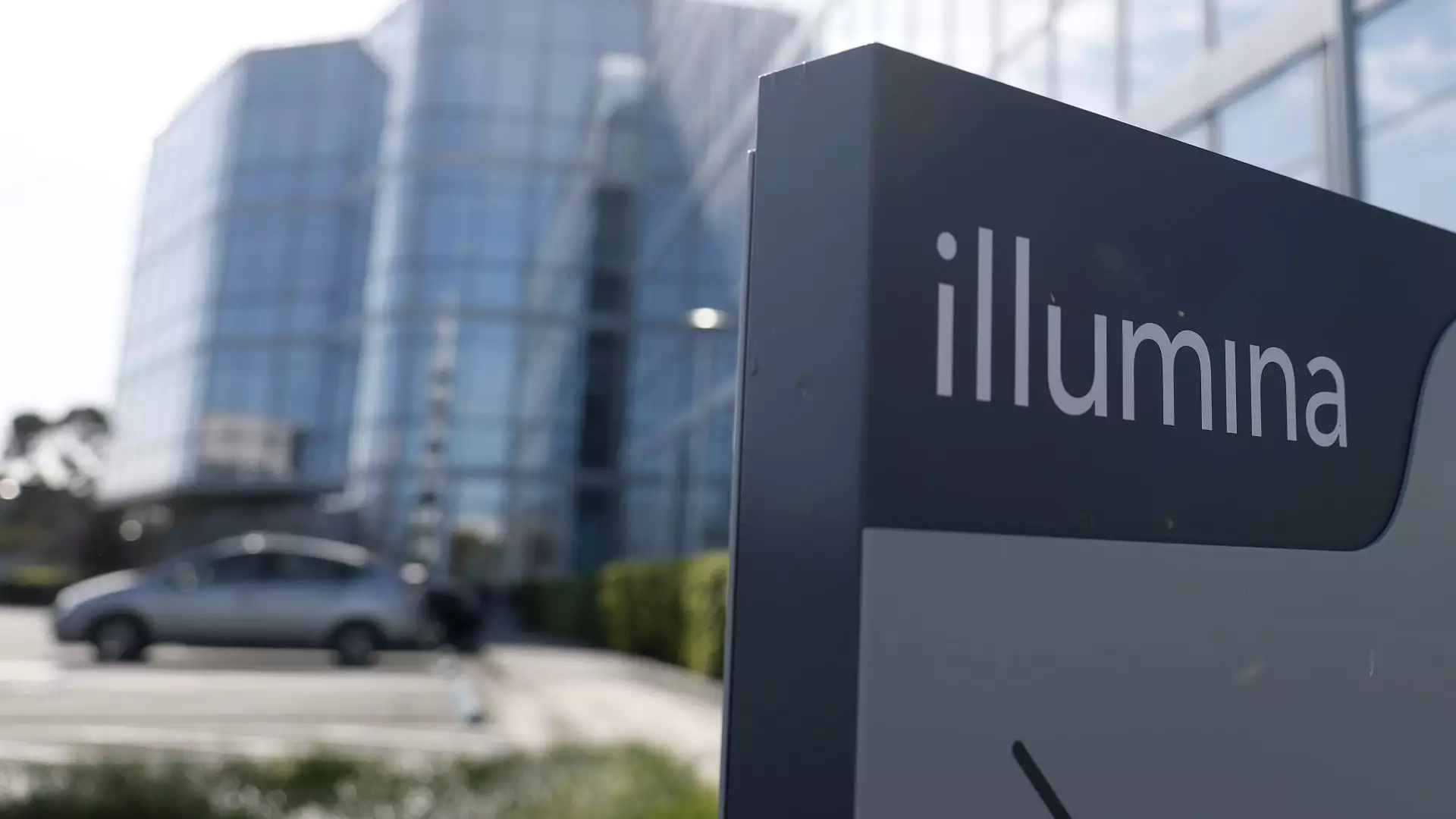Illumina, once hailed as the cornerstone of genomic technology, has found itself teetering on the precipice of a troubling era. As the leading provider of DNA sequencing and genomic analysis solutions, Illumina enjoyed unprecedented growth during the COVID-19 pandemic—elevating its market value dramatically in a very short time. From revenues skyrocketing to $4.5 billion in 2021, to a staggering drop to around $4.3 billion, the company’s trajectory has been anything but linear. Today, Illumina’s stock price sits at an alarming $80 per share, reflecting a more than 80% decline from its 2021 high of over $511. The once-renowned Fortune 50 company, which boasted a market capitalization that soared to $70 billion, now finds itself valued at a mere $12.67 billion. Such numbers paint a grim picture for a company at the forefront of genomic innovation.
Leadership Changes and Corporate Turmoil
Recent leadership changes at Illumina have raised eyebrows among investors and observers alike. The company recently appointed Keith Meister of Corvex Management to its board, a move that could signal an overdue transformation. While the infusion of talent is welcomed, it’s also a glaring indicator that Illumina is striving to navigate turbulent waters. The company has also seen removals from its board, illustrating an environment where accountability measures go hand-in-hand with internal strife.
Corvex’s influence suggests that Illumina may be attempting to shake off the aftermath of its costly, protracted acquisition saga involving Grail. Initially spun out in 2016 and reacquired for $8 billion in 2020, this deal has faced escalating regulatory challenges. The European Commission, in a dramatic turn, blocked the acquisition, imposing a substantial fine on Illumina. The subsequent re-spin of Grail in June 2024, spurred by activism from Carl Icahn, indicates that Illumina is not just facing internal upheaval; it is also battling external regulatory pressures that complicate its operational landscape.
Market Positioning and the Demands of Innovation
Illumina remains the dominant player in the sequencing market, capturing over 80% of the global market share. The company operates on a razor-and-blade model where profit margins from its machines hover around 30%, while consumable sales yield an impressive 80% margin. Despite these traits, significant challenges loom ahead as Illumina prepares to launch its next-generation NovaSeq X sequencing technology. This transition poses risks, potentially leading to a dip in revenues—at least in the short term—as the company invests its resources in evolving its technology to stay relevant.
While skeptics might argue that the company’s leadership struggles point to an inability to innovate, it’s worth noticing that the genomic landscape is evolving faster than ever. Illumina stands at a crossroads, facing pressures not just from competitors but also from a complex socio-political climate that has seen rising tensions in U.S.-China relations which have serious implications for biotech firms with international operations.
The Uncertain Future of Biotech Funding
Adding to Illumina’s woes is the uncertain future of funding in the biotech sector, particularly with the National Institutes of Health facing unpredictable budgetary challenges. Research and development often hinge on stable government funding; the current climate raises concerns over whether Illumina can maintain its innovation momentum. The industry’s reliance on public funding amidst political tumult demonstrates the heavy burden placed on companies that thrive on governmental support to push forward groundbreaking research.
When external funding mechanisms experience turbulence, the repercussions are felt acutely by biotech firms such as Illumina, which rely on research-driven advances for survival. The looming uncertainty casts a shadow on the future of genomic research—a sector that Illumina seeks to dominate.
Potential Paths Forward: Hope or Despair?
Although several alarm bells are ringing, it is crucial to recognize the opportunities that lie ahead for Illumina. With new leadership and a commitment to refocusing their business strategy, there is potential for a turnaround. Meister’s extensive experience across biotech boards—coupled with a strong understanding of market demands—may position Illumina to recalibrate its focus on longevity.
Despite the negative headlines, the long-term demand for genomic solutions remains robust. As the company continues to re-strategize and adapt to the evolving landscape, its expertise in gene sequencing technology might well prove to be a lifeline. The combination of a revitalized board and the potential to rid itself of its Grail baggage offers a glimmer of hope amidst the chaos.
Nevertheless, as Illumina navigates through these choppy waters, the question remains: will it seize the moment to rebuild trust and market confidence, or will it continue down the path of decline that’s characterized so much of its recent history? The game is far from over, and how Illumina responds to these myriad challenges will determine its fate in the years to come.

